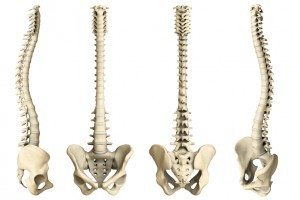A lateral deviation of the spine is known as a Scoliosis. This results in the spine rotating around the vertical axis giving the spine a twisted appearance. Radiologically a scoliosis is defined by a Cobb angle of greater than 10 degrees, which is basically an indicator of the severity of the curve.

- positive family history
- more common in girls than boys
- AIS in girls accounts for 90% of the curves seen in clinical practice
- lateral deviation of the spine
- spine has a rotated appearance
- one shoulder or hip may look higher than the other
- rib hump with bending forward
Detection is via an x-ray and the severity is assessed by a radiologist who determines the cobb angle.
Most curves can be managed with physiotherapy which consists of postural education, manual therapy to loosen stiff joints and strengthening/core exercises to strengthen areas of weakness. Scoliosis where the cobb angle exceeds 25 degrees may require bracing and curves over 50 degrees may require surgery. This consists of straightening the curve with Harrington rods.
All Physica staff have received extra training in the management of scoliosis. We will assess your spinal curve and may request an x-ray to confirm the diagnosis. We will then devise a comprehensive physiotherapy plan to return you to optimum capacity.

